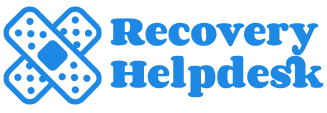Addiction and recovery are serious business. Lives are literally at stake.
It’s a world where words and the concepts they describe have enormous potential to do good, or harm.
Over time, I’ve developed what I call The Devil’s Dictionary of Recovery Terms. These are words or phrases which I have come to believe do more harm than good.
Ron at the blog An Addict in Our Son’s Bedroom did a great post about the term “hitting bottom” today. Read it here.
Ron says in his post, “For many years through this journey people have counseled us that nothing will actually change until our addict hits bottom.”
Ron goes on to explore the term, and it seems clear to me that he is uncomfortable with the term. We all should be.
He tried to learn from the experts what he should expect about his son “hitting bottom.” The answers he got were “always vague and indeterminate,” he says. “Bottom is different for every person,” they told him.
I think Ron, and thousands of other parents, have been given bad counsel. A LOT can change without an opiate dependent person “hitting bottom.”
In a familiar pattern with words and phrases that make it into The Devil’s Dictionary of Recovery Terms, the devilment starts with a kernel of truth: discomfort is motivating.
When you put your hand onto a hot burner, the pain motivates you to remove your hand from the fire. Great.
So the pain of “hitting bottom” should motivate the opiate dependent person to stop using opiates. And to some extent it does.
Here’s the problem:
1. An opiate dependent person does not have full exercise of their free will. Their free will is compromised.
To continue with the hand in the fire metaphor, the opiate dependent person does not have full control over their hand.
They can’t just pull it out of the fire. They need help to get it out of the fire.
They would pull their hand out of the fire on their own if they could, of course.
So just sitting idly by waiting and waiting for them to pull their hand out of the fire while the pain and harm gets worse and worse is just stupid and cruel.
2. Opiate dependence is powerful enough and the opiate dependent person’s free will is compromised enough, that waiting for the person to “hit bottom” can mean the person goes on to experience HIV infection, Hepatitis C infection, unemployment, homelessness, incarceration, loss of child custody, loss of family relationships, risk of violence, or worse.
They might die of a fatal drug overdose before they ever have the fabled opportunity for recovery that hitting bottom is said to bestow.
And let’s not forget the collateral damage to families and communities.
You can’t wait for an opiate dependent person to “hit bottom.” The price is too high.
What drug treatment program would be granted funding if they explained that their program would effectively treat opiate dependence, but it would first require subjecting the client to that list of horrors?
3. Opiate dependence is powerful enough and the opiate dependent person’s free will is compromised enough that most of the time this kind of extreme suffering/harm/damage is not sufficient to create the conditions necessary for successful recovery.
This means that the suffering/harm/damage was unnecessary, because it didn’t work.
4. Most of the time this kind of extreme pain/harm/damage is not necessary to create the conditions necessary for successful recovery.
Even if all that pain does create some motivation to change, less destructive and more effective methods are available to set the stage for recovery.
5. The concept excuses drug treatment professionals from taking responsibility for their own failures.
They don’t have to make the effort to improve their treatment interventions. They don’t have to acknowledge or remedy their own inability to effectively engage, retain and treat clients.
It’s an excuse to say that a client doesn’t want treatment or left treatment early because they haven’t hit bottom. No Mr. Treatment Provider, you haven’t developed the skill or program design necessary to engage and retain the client in treatment.
It’s an excuse to say that a client relapsed during or after treatment because they haven’t hit bottom. No Ms. Treatment Provider, you haven’t developed the skill or the program design necessary to adequately stabilize that client in recovery.
Treatments fail clients, clients don’t fail treatments.
6. The concept implies that it is a good thing for people who are opiate dependent to experience pain, suffering and serious harm. It says that all that harm is necessary to get to recovery.
The concept excuses those who sit idly by and do nothing to prevent suffering.
It gives permission to politicians, treatment providers, probation officers, judges and others to pile on the pain and suffering.
Consider the ER doctor who refuses to use anesthetic to drain an abscess. Or the jail that refuses to provide medical support for opiate withdrawal.
It’s a devil’s delight.
The concept of “hitting bottom” is recovery folklore -nothing more. There is no science to back it up.
I have never seen a scientific research study that proved that an opiate dependent person has to “hit bottom” before they can change.
More than 10 years of experience helping people who inject opiates transition from use to recovery tells me they do not have to hit anything like a “bottom” to achieve recovery.
The sad thing is people living with opiate dependence often do experience extreme suffering and harm. It just doesn’t result in recovery.
And sadder still, recovery was available all along without the need for all that suffering and destruction.
